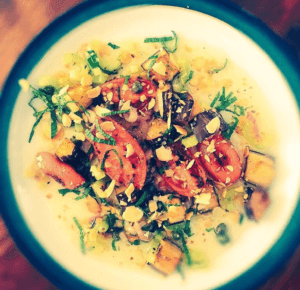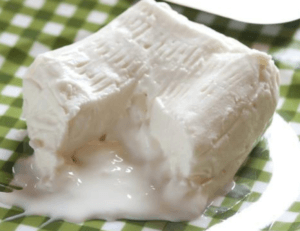Pizzaiolo Beginners Guide
When I was a kid, pizza was my nonna’s heavy, cardboard like crust with a scraping of leftover sugo from a previous nights dinner and if I was lucky, that blocky mozzarella you feel is better suited to as a buoyancy aide rather than something to be cooked with. In my teens, pizza either came from the freezer or was the perennial and purportedly “thin and crispy” roman style crust, all flimsy wet base, chewy crust, danish mozzarella and dried oregano. Then at some point between my 20’s and 30’s the UK got really serious about pizza, like tambourine banging, self flagellation sermon on the mounts serious. All of a sudden consumers were thrust into an arena of sourdough bases, 48 hour levitations, leoparding, hole structure and my least favourite one “lo-mo” (low moisture mozzarella cheese…) In nearly every way, this was an incredible moment in the rapidly moving love affair the British have with Italian food, a new epoch of pizza. From Aberdeen to Brighton, if you looked carefully you could find a pizza that wouldn’t be a million miles away from what you could be eating on the Via Tribunalli in Naples. The caveat to this however, was everything behind making a pizza, became really complex, really quickly.
There has never been a period in the history of pizza where when making your own at home you can get so lost, bamboozled or suffer from extreme feelings of inferiority because that piece of dough you lovingly worked from a handful of flour, 48 hours later fails to achieve leoparding on the crust and you are looking at 3 likes on instagram. I am sure I will invite criticism by saying this from the more evangelical members of the cult of pizza, but don’t panic. Don’t seek a session on the couch with Enzo Coccia or waste hours watching youtube videos hoping in vain that you might find that holy grail-like tip. Pizza is simple. It was really simple and basic in Napoli 300 years ago when Carlo Collodi described it as a burnt piece of dough, a black toasted bit of bread covered in sickly garlic, a right “patchwork of greasy filthy”
There is lots of really simple recipes out there to get you started in the world of pizza making. Its probably best to find one which you feel comfortable with and going from there. If you havent made bread before, just a simple loaf, Id recommend you do this first before attempting a pizza. Pizza isnt difficult once you understand how dough feels, moves and acts. Once you have done this, then you can start to think about pizza, but like I said start small and then start experimenting
Top 10 Pizza Kit Essentials
1. Dough scraper
It will bring your dough together, keep your bowls clean, your hands clean and your work surfaces clean.
2. Electronic scales
A good quality electric scales will be the difference between calamity and absolute victory.
3. Pyrex bowls
Its not a necessity but it does help if you want to watch your dough proving and avoid the fear of over proving.
4. A Pizza stone
I personally don’t use them in the home oven as I like the nostalgia of a baking tray, however if you do want to get as close to the real thing and don’t have the money for a pizza oven in your kitchen, they can give you a similar effect of a true stone baked pizza.
5. Some clear plastic bin liners or big plastic bags
No, its not because you will need extra bin liners to accommodate all the dough and failed pizza crusts you end up throwing away. I use these to cover my dough when its proving. The clear ones are good as you can still see the dough and know just the right time to stop and proving. Plus, they are reusable and in the long term, much cheaper than cling film.
6. A rolling pin
Just in case your dough isn’t playing ball
7. An oven safe frying pan
Again, a strange one, but frying pans are great if you are making a pizza in your home oven. You can place your base in the pan, top and place on the hob to start the base off, before putting into a hot oven to finish. Clean and simple, even better if you have a detachable handle
8. A measuring jug
Accuracy again, is key to creating a decent pizza.
9. A stand mixer
– if you can afford it, is a very worthwhile piece of kit and will save you a lot of time and muscle wastage.
10. A picture of either The Virgin Mary or Maradonna to hang close to the oven
It will make you feel like you are a true Neapolitan pizzaiolo and in turn build your confidence more than any 3 day intensive course in Naples itself could.
The first recipe is unashamedly, a basic bread recipe, id say this is your baby step into making pizza and forming, feeling and experimenting with this dough is going to be integral to progressing to more difficult, complex doughs that require a bit more tomfoolery and experience. This dough doesn’t require long proving times and is not going to coat you and every exposed part of your kitchen in a chewing gum-like dough that makes the blob moving into your a more preferable option than making dinner.
- 500g 00 flour
- 3g fresh yeast/10g dried yeast
- 300ml lukewarm Water
- 10g salt
Method:
– Mix the salt and flour together (you don’t want the yeast and salt to come into contact, so mix the salt really well and it will give it a little forcefield of flour to protect it)
– Mix the yeast and water together and let sit until the water develops a little bit of foam/surface bubbles
– Slowly add the water/yeast to the flour. Remember that flour has a tremendous capacity to suck up liquid so the more you mix the better.
– Once your dough is smooth and pliable and is no longer mottled, place it in a bowl, cover and leave for around 4 hours. I use a clear glass pyrex bowl so I can watch it and usually write the details of the dough on the bowl or cling film. Try and make sure the dough is left in a warm place, away from drafts.
– Once the dough has really doubled up youn need to knock it back to stop the levitation otherwise the dough will over prove .
– Punch the dough down and form into balls of equal weight, I usually go for about 200g
– Form the balls and cover with a little more flour and make sure again, they are covered with either a tea towel or clingfilm. You don’t want any air to get to the dough
– Once the dough balls have doubled up, you want to open them out. Its quite hard to describe how to do this so either watch the video, find a video or use a rolling pin. All I would say is that you want to push the dough out from the centre to form a crust, rotating and moving the dough as you go along to create the base.
– Once the dough is opened up into the pizza base, you need to top it and put it in the oven as high as possible. I leave the cheese off and put it on once the base is baked so it doesn’t get too brown or burnt.
Sauce
I am loathed to do much more than get a really good passata or can of whole tomatoes, crush them down, add a good pinch of salt, lots of torn basil, extra virgin olive oil and a twist of pepper.
When you start cooking a tomato sauce, you concentrate it, it becomes a bit jammy and I like my pizza sauce to be light and still quite fresh tasting so again, I wouldn’t really recommend cooking out a sauce. The time the pizza will have in the oven will give it exactly the right amount of cooking time it needs and leave that sparky, fresh taste of the tomatoes one of the main stars of the show
In a few of the restaurants I worked in, the pizzaiolo’s would add different additions depending on their own locality, but it was really nothing more than maybe a pinch of good quality dried oregano, very finely sliced garlic, a little chopped anchovy or a pinch of chilli. Remember less is more with a pizza.
All I would say is that don’t go over the top, keep it light, simple and don’t think that a ragu is the best way to layer that ground work of flavour for a pizza.
Other vegetables make great bases, not just the tomato. One of my favourites is to make a Genovese finto. This is basically a load of onions, sweated down for about 40 minutes with some salt, olive oil, a bay leaf and a few peppercorns. You need to add a bit of water and sugar too. You get this really moorish, sweet sauce that works brilliantly with some fiore di latte and fresh chive.
Recipe 2:
This recipe is a little more advanced and should give you a lighter crust. You will need some fridge space or somewhere cool for this to rest over night. I sometimes cover this dough and leave it by the back door or in the porch where it will stay a little colder and the reaction will take longer. You can do this recipe by hand, but I would really recommend doing it in a stand mixer. If you don’t have a stand mixer, you will probably need to have a dough scraper to work with the dough as it will be quite wet.
- 500g 00 flour
- 350ml water
- 2g fresh yeast
- 10g salt
– Mix the water and the yeast together, and as before, wait for the yeast to start producing bubbles
– Mix the flour and the salt together
– Slowly add the water and integrate well into the flour.
– The dough is going to be wet, so id advise working on the kitchen table on a wipe clean tablecloth, the type you would probably bring back from a trip to Italy. You know the type, plastic and adorned with lemons.
– Work the dough for a good 20-30 minutes, cover and leave over night. When you come down in the morning it should be a flat surface, but nearly reaching the top of the bowl.
– I knock this back again, and add a little extra flour before forming into balls and letting rest until I need to cook. You want to make sure that the dough has half an hour out of the fridge before you start to form the base as it will be too tight to open out.
Worth Remembering:
I wish someone had told me when I first started making bread, that sometimes things go wrong that are totally out of your control. Ovens may have dodgy seals, yeast may have died, the wind may be blowing in the wrong direction, the temperature may plunge or soar, humidity etc etc. Lots of things can affect your dough, so do not despair if things don’t turn out perfect.
When I decided I really wanted to learn how to make bread, I just would buy some cheap flour and yeast and put aside a day now and again to get a real feel for it all. Id weigh out everything, even water, and make notes. Id experiment with different temperatures and moisture levels until I started to understand what was happening a bit more. So to reiterate, when you are making your pizza don’t despair if it doesn’t look like the experts you follow on social media or have seen in a cook book. It is a skill to make bread, and like all skills it requires a little time, patience and investing in. Remember, whatever you do will more than likely be edible so its not all bad and you will have fun getting there.

 Caponata , aptly nicknamed “A Hungry Mans Dream”, is quite possibly one of the best meals you can make if you are a body toning nut job who doesn’t want to compromise on the flavour and morale that is usually associated with “Health” food. Its very simply a vegetable stew, but one which allows each vegetable its own little spotlight. People may scoff at the thought of It being healthy as its best made when fried, but it can also be done under the grill or even blanched (maybe for those suffering from Orthorexia)
Caponata , aptly nicknamed “A Hungry Mans Dream”, is quite possibly one of the best meals you can make if you are a body toning nut job who doesn’t want to compromise on the flavour and morale that is usually associated with “Health” food. Its very simply a vegetable stew, but one which allows each vegetable its own little spotlight. People may scoff at the thought of It being healthy as its best made when fried, but it can also be done under the grill or even blanched (maybe for those suffering from Orthorexia) The Thomas Cook middle England “Pilgrimage of The Sun” route
The Thomas Cook middle England “Pilgrimage of The Sun” route
